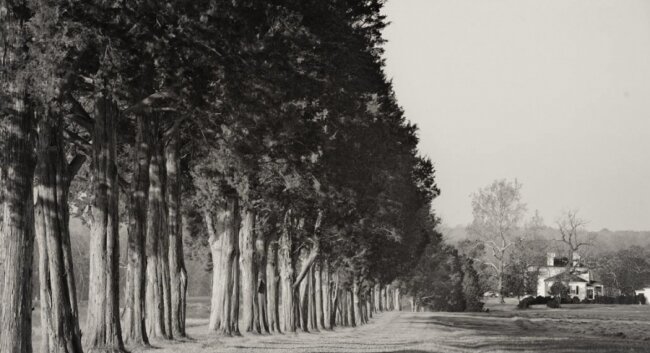Tree sentries
A row of red cedar, scientific name juniperus virginiana, stand guard on a farm in Green Springs National Historic District in Louisa County. Known as "pioneer invaders," they are among the first to take root on damaged land, and can live up to 850 years.
Read more on: bill emory

10 comments
Oh boy, dont let Lumberjack Janis see them or she will be all Charlottesville Chainsaw massacre on those scraggly things!
Bill --
Beautiful shot. And for the perfect foil, you (and everyone else) should check out the abysmally abused Zelkovas lined up on the north side of the Hampton Inn on West Main Street. "Tree City," my foot.
Footnote on the "cedar" sentries: Such rows are common along old fence lines or where fences long stood -- clearly the case here -- because juniperus virginiana sprouts particularly well from berries that have gone in one end of feathered fence sitters and out the other.
Have a wam spot for red cedars. They were always my family's Christmas tree when I was growing up. And love the smell.
Remember as a child going out and finding one along the wood's edge or hilly field on the mountain farm where I grew up on.
Its true, they are among the first woody plants to appear in abandoned fields. But better them than ailanthus, and some other non-native invasives.
Lovely picture, but the caption may mislead. A long row of cedars like that suggests the trees sprouted from a line of cedar fenceposts, rather than "pioneer invaders" spontaneously taking root on damaged land.
Cedar fence posts aren't going to sprout into trees. That's just simple windbreak. People have been planting them for a long time and they are common along old driveways.
The caption doesn't suggest that those trees grew up spontaneously there, just that they frequently are the first to colonize disturbed land.
Those damned trees! I can't see the pretty mountain view from the road! They are clearly shaggy and unattractive eww gross! I only surround myself with attractive things because like they are pretty and so am I. Like me on facebook and if you are attractive I will accept your friend request. Holla!
Actually Cedar trees were not only planted as natural fence post but also along driveways as a way of keeping the sun off the driveways in the winter to prevent snow from turning the mud into an unbearable mess for the old horse and wagon. Frozen mud made for a rough ride.
Definitely planted. Spacing is too regular. ...and god bless green springs! So close...and so unknown. Ought to be a major tourist attraction.
"And for the perfect foil, you (and everyone else) should check out the abysmally abused Zelkovas lined up on the north side of the Hampton Inn on West Main Street."
Some time ago, having seen a similarly abysmal treatment of trees, I asked a friend if someone was trying to pollard the trees. She replied that they hadn't been pollarded, but rather they had been "rednecked". That was my first thought when seeing the Hampton Inn trees.
As for the friend and her "redneck" remark, what a suitably elitist comment for this thread. Naturally, no well educated urbanite would have performed such shoddy treescape work along that lovely strand known as West Main Street.
Those Zelkovae just mesh so well with the architecture in that area.
R.I.P.: Euell Gibbons